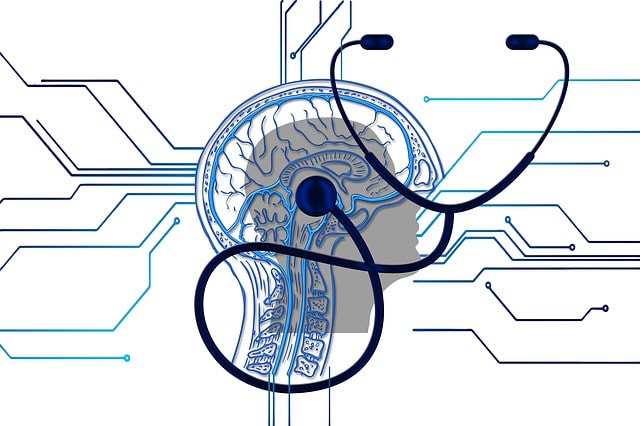The Relationship Between Vaping and Eating Disorders in College Students
Drug and alcohol use have become very prevalent among young adults. In particular, electronic nicotine delivery systems (ENDS), an umbrella term encompassing vape pens, electronic cigarettes, and pods have grown in popularity among university students. A 2020 retrospective study reported that up to 40% of college students have either tried or are currently using e-cigarettes or vapes.
The adverse health consequences of e-cigarette and vape use have been studied previously. Using these devices involves the inhalation of harmful chemicals that are toxic to the body’s cells, which can lead to irreversible lung or cardiovascular damage and chronic nicotine addiction.
Preliminary research has explored potential links between substance use, specifically cigarette use, and eating disorder symptoms or diagnoses, concluding that between 30–50% of adults with eating disorders reported smoking often. However, little is known regarding a relationship between ENDS use and increased eating disorder diagnoses and risk. A 2021 study hypothesized that there is a positive relationship between ENDS use and both eating disorder diagnoses and risk among university students.
Data from the Healthy Minds Study (HMS), a survey measuring the physical, mental, and social health of students, was used to determine correlation between ENDS use and eating disorder diagnoses and risk. Eating disorder diagnosis was measured through a self-report survey asking whether participants were professionally diagnosed with an eating disorder. Eating disorder risk was measured through a questionnaire in which participants indicated “yes” or “no” to five questions related to eating habits such as, “Do you worry that you have lost control over how much you eat?” and “Have you recently lost more than 15 pounds in a 3-month period?” Eating disorder risk was determined by the number of “yes” responses indicated by the student, with two or more “yes” responses associated with elevated eating disorder risk. ENDS use was measured through a self-report question that asked students if they had used an e-cigarette or vape pen within the last 30 days.
The adverse health consequences of e-cigarette and vape use have been studied previously. Using these devices involves the inhalation of harmful chemicals that are toxic to the body’s cells, which can lead to irreversible lung or cardiovascular damage and chronic nicotine addiction.
Preliminary research has explored potential links between substance use, specifically cigarette use, and eating disorder symptoms or diagnoses, concluding that between 30–50% of adults with eating disorders reported smoking often. However, little is known regarding a relationship between ENDS use and increased eating disorder diagnoses and risk. A 2021 study hypothesized that there is a positive relationship between ENDS use and both eating disorder diagnoses and risk among university students.
Data from the Healthy Minds Study (HMS), a survey measuring the physical, mental, and social health of students, was used to determine correlation between ENDS use and eating disorder diagnoses and risk. Eating disorder diagnosis was measured through a self-report survey asking whether participants were professionally diagnosed with an eating disorder. Eating disorder risk was measured through a questionnaire in which participants indicated “yes” or “no” to five questions related to eating habits such as, “Do you worry that you have lost control over how much you eat?” and “Have you recently lost more than 15 pounds in a 3-month period?” Eating disorder risk was determined by the number of “yes” responses indicated by the student, with two or more “yes” responses associated with elevated eating disorder risk. ENDS use was measured through a self-report question that asked students if they had used an e-cigarette or vape pen within the last 30 days.
Image Source: rolandmey
The HMS data revealed that 19% of participants reported using an e-cigarette or vape within the past 30 days. 25% of participants showed elevated eating disorder risk and 3.7% reported prior eating disorder diagnoses. Among those that reported having a prior eating disorder diagnosis, 71.3% showed elevated risk for eating disorder. Importantly, there were statistically significant associations between e-cigarette and vape use and both measures of eating disorder. These associations remained even when other factors were accounted for, such as demographic characteristics, participants’ mental health, and other substance use. If not adjusted for, these could have functioned as third variables and reduced the accuracy of the findings, preventing the researchers from establishing a clear, causal relationship between ENDS use and eating disorder diagnosis and risk.
The positive relationship expected by the researchers was supported by the HMS data, providing evidence of a positive association between e-cigarette and vape use and eating disorder diagnosis and risk. However, there were notable limitations to the study methods, namely that all data obtained in the study was self-reported, presenting the possibility of social desirability bias, or the tendency for participants to underreport undesirable traits and overreport desirable traits.
Despite this limitation, there remain clear adverse effects of e-cigarette and vape use, including irreversible lung damage and nicotine dependence. The popularity of ENDS use persists among young adults and university students in particular. The negative health consequences of ENDS use are unavoidable and there continues to be a need for regulation of e-cigarette and vape use among young adults. The study’s results show significant reason for healthcare professionals to examine possible eating disorder symptoms among university students that report ENDS use.
The positive relationship expected by the researchers was supported by the HMS data, providing evidence of a positive association between e-cigarette and vape use and eating disorder diagnosis and risk. However, there were notable limitations to the study methods, namely that all data obtained in the study was self-reported, presenting the possibility of social desirability bias, or the tendency for participants to underreport undesirable traits and overreport desirable traits.
Despite this limitation, there remain clear adverse effects of e-cigarette and vape use, including irreversible lung damage and nicotine dependence. The popularity of ENDS use persists among young adults and university students in particular. The negative health consequences of ENDS use are unavoidable and there continues to be a need for regulation of e-cigarette and vape use among young adults. The study’s results show significant reason for healthcare professionals to examine possible eating disorder symptoms among university students that report ENDS use.
Featured Image Source: Renz Macorol
RELATED ARTICLES
|
Vertical Divider
|
Vertical Divider
|
Vertical Divider
|






